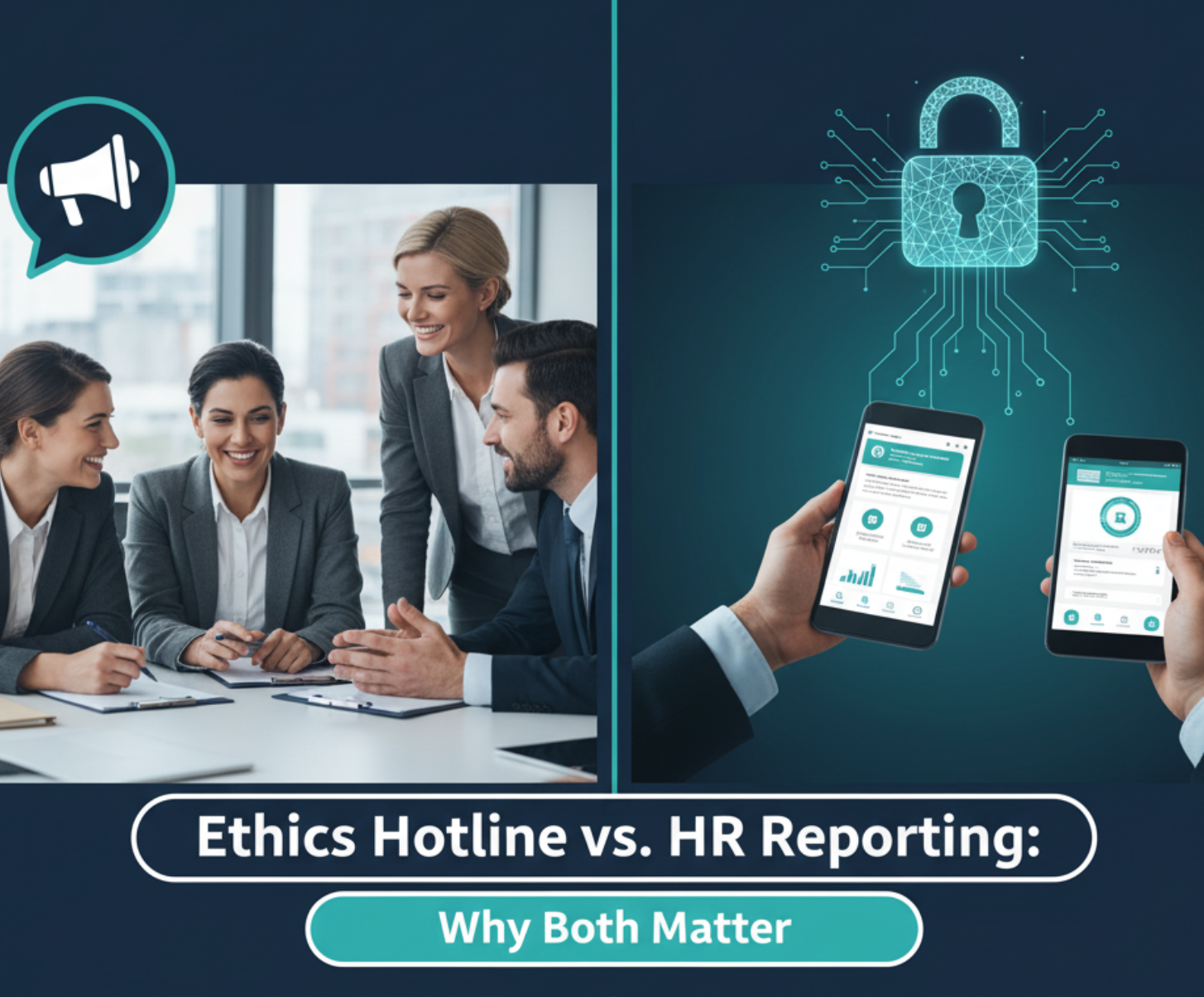Case Studies: How Employee Hotlines Prevent Fraud and Misconduct
Organizations today face increasing pressure to maintain ethical standards and comply with regulations. Yet, even the most robust compliance programs can fail without a reliable way for employees to report concerns. This is where a fraud hotline—or employee hotline—proves invaluable.
Hotlines provide a confidential, often anonymous channel for employees, vendors, and even customers to report fraud, misconduct, or policy violations. But do they really work? The answer is a resounding yes. The below compliance case studies illustrate how hotlines have successfully prevented fraud and workplace misconduct.
Case Study 1: Stopping Financial Fraud Before It Escalated
The Situation:
A mid-sized manufacturing company noticed discrepancies in its quarterly financial reports but couldn’t pinpoint the cause. Everything appeared normal during internal audits.
The Hotline Report:
An anonymous employee used the company’s fraud hotline to report that a senior accountant was manipulating expense accounts to cover personal purchases. The employee feared retaliation and didn’t feel comfortable going to their manager directly.
The Outcome:
The hotline report triggered an internal investigation, which confirmed the fraud. The company was able to terminate the employee before the losses escalated beyond \$50,000. More importantly, the company avoided reputational damage and potential regulatory penalties.
Key Takeaway:
Without the hotline, the fraud could have continued undetected for months or even years. This case highlights how workplace misconduct reporting success often depends on providing a safe, anonymous reporting channel.
Case Study 2: Preventing Harassment from Becoming a Lawsuit
The Situation:
At a professional services firm, a junior employee experienced repeated inappropriate comments from a senior manager. The employee feared that reporting the behavior internally would harm their career.
The Hotline Report:
Through the compliance hotline, the employee reported the harassment anonymously. Importantly, the hotline platform allowed for two-way communication between the reporter and the investigator while preserving anonymity. This feature enabled the investigator to ask clarifying questions and gather additional details without revealing the employee’s identity.
The Outcome:
The investigator used this back-and-forth communication to obtain specific examples, dates, and corroborating details, which strengthened the case beyond a simple “he said/she said” scenario. The investigation confirmed the misconduct, and the company took corrective action, including disciplinary measures and mandatory training for leadership.
Key Takeaway:
An effective hotline does more than collect reports—it facilitates secure, anonymous dialogue that helps investigators build a fact-based case. This capability can make the difference between an unresolved allegation and a successful resolution.
Case Study 3: Detecting Vendor Kickbacks
The Situation:
A healthcare organization suspected inflated vendor invoices but lacked evidence.
The Hotline Report:
A whistleblower reported that a procurement manager was accepting kickbacks from a supplier in exchange for approving overpriced contracts.
The Outcome:
The organization investigated and uncovered a scheme that had cost them hundreds of thousands of dollars. The procurement manager was terminated, and the vendor relationship was severed.
Key Takeaway:
Vendor fraud is notoriously difficult to detect through audits alone. A fraud hotline provided the critical tip that saved the organization significant financial losses.
Case Study 4: Early Warning on Safety Violations
The Situation:
In a large distribution center, employees noticed that safety protocols were being ignored to speed up production. Supervisors were pressuring staff to bypass lockout/tagout procedures, creating a serious risk of injury.
The Hotline Report:
An employee reported the issue through the hotline, fearing retaliation if they spoke up in person.
The Outcome:
The company immediately addressed the violations, retrained supervisors, and avoided what could have been a catastrophic workplace accident—and a major OSHA fine.
Key Takeaway:
Hotlines aren’t just about compliance—they protect lives. This case underscores the value of anonymous reporting for safety concerns.
Case Study 5: Protecting Company Culture
The Situation:
A tech startup prided itself on an inclusive culture, but rumors of favoritism and unethical hiring practices began circulating.
The Hotline Report:
Multiple employees used the hotline to report that a senior leader was hiring friends without proper vetting and bypassing HR protocols.
The Outcome:
The company investigated, confirmed the allegations, and implemented stricter hiring controls. By acting quickly, leadership preserved trust and avoided a toxic culture that could have driven away top talent.
Key Takeaway:
Hotlines help organizations maintain integrity—not just compliance—by giving employees a voice.
Why These Stories Matter
According to the Association of Certified Fraud Examiners (ACFE), organizations with hotlines detect fraud 50% faster and experience smaller losses than those without. These case studies show that a well-managed hotline:
- Encourages early reporting of fraud and misconduct
- Protects employees from retaliation
- Saves organizations from financial, legal, and reputational harm
- Strengthens ethical culture
Final Thoughts
A fraud hotline isn’t just a compliance checkbox—it’s a strategic tool for risk management and cultural health. Whether preventing financial fraud, stopping harassment, or addressing safety concerns, hotlines empower employees to speak up and help organizations act before problems spiral out of control.
If your organization doesn’t have a hotline—or if your current system isn’t delivering results—it’s time to reconsider. The cost of silence is far greater than the investment in a robust reporting mechanism.
Learn what an ethics hotline is here and 5 benefits of them here. Want to learn more? Contact us.
Learn more from the Institute of Internal Auditors here.
Reach Us
Red Flag Reporting
P.O. Box 4230, Akron, Ohio 44321
Tel: 877-676-6551
Fax: 330-572-8146




